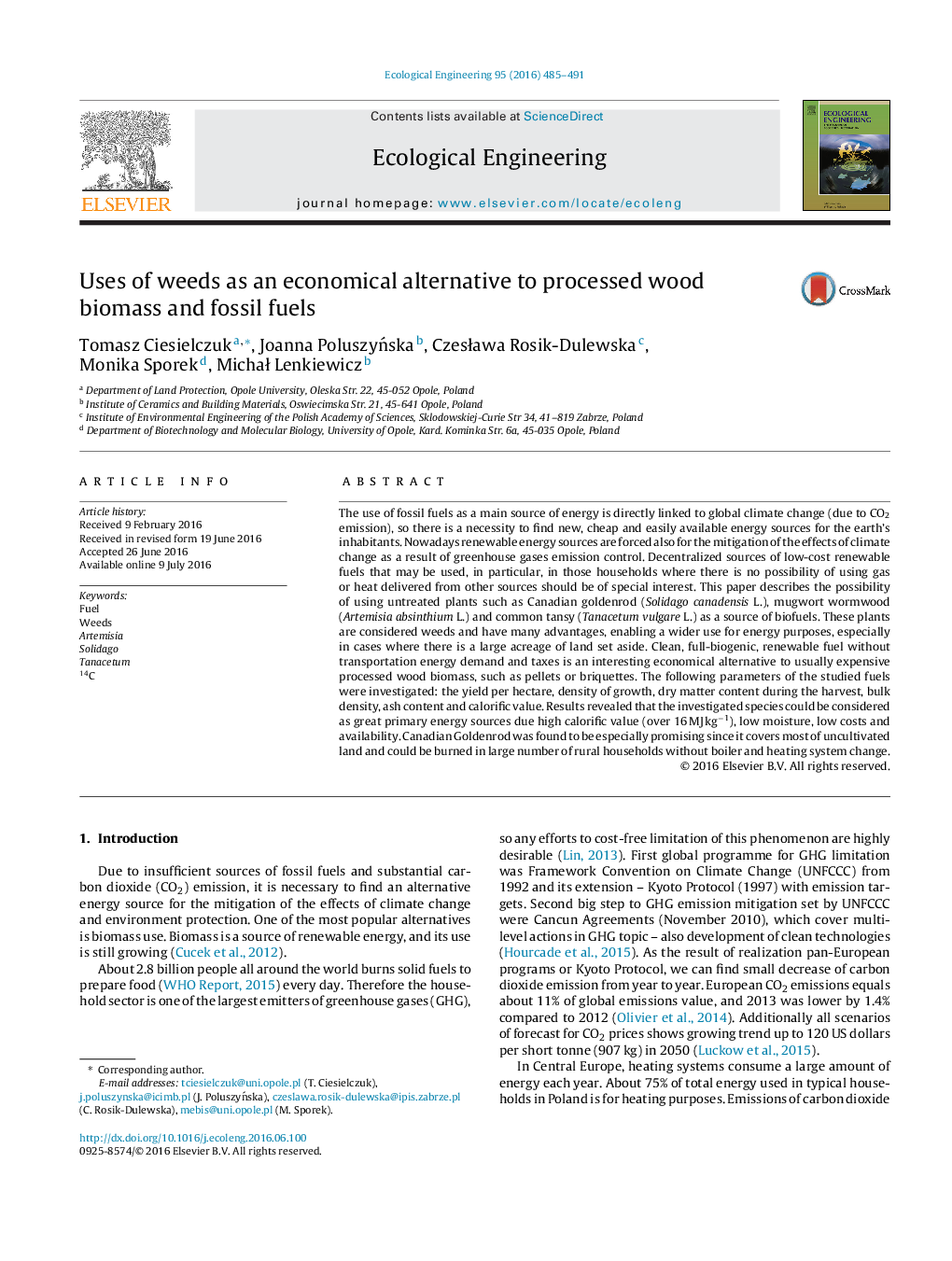| Article ID | Journal | Published Year | Pages | File Type |
|---|---|---|---|---|
| 4388475 | Ecological Engineering | 2016 | 7 Pages |
•Three cheap biomass fuels for small households is proposed.•These fuels are cheap because grow without typical agriculture on every non-cultivated grounds.•Use of these plants don’t lead to environment devastation (sustainability).•Use of these plants is climate friendly – due to balance of CO2.•Collected dry biomass has high calorific value in comparison to “energetic” plants.
The use of fossil fuels as a main source of energy is directly linked to global climate change (due to CO2 emission), so there is a necessity to find new, cheap and easily available energy sources for the earth’s inhabitants. Nowadays renewable energy sources are forced also for the mitigation of the effects of climate change as a result of greenhouse gases emission control. Decentralized sources of low-cost renewable fuels that may be used, in particular, in those households where there is no possibility of using gas or heat delivered from other sources should be of special interest. This paper describes the possibility of using untreated plants such as Canadian goldenrod (Solidago canadensis L.), mugwort wormwood (Artemisia absinthium L.) and common tansy (Tanacetum vulgare L.) as a source of biofuels. These plants are considered weeds and have many advantages, enabling a wider use for energy purposes, especially in cases where there is a large acreage of land set aside. Clean, full-biogenic, renewable fuel without transportation energy demand and taxes is an interesting economical alternative to usually expensive processed wood biomass, such as pellets or briquettes. The following parameters of the studied fuels were investigated: the yield per hectare, density of growth, dry matter content during the harvest, bulk density, ash content and calorific value. Results revealed that the investigated species could be considered as great primary energy sources due high calorific value (over 16 MJ kg−1), low moisture, low costs and availability. Canadian Goldenrod was found to be especially promising since it covers most of uncultivated land and could be burned in large number of rural households without boiler and heating system change.
